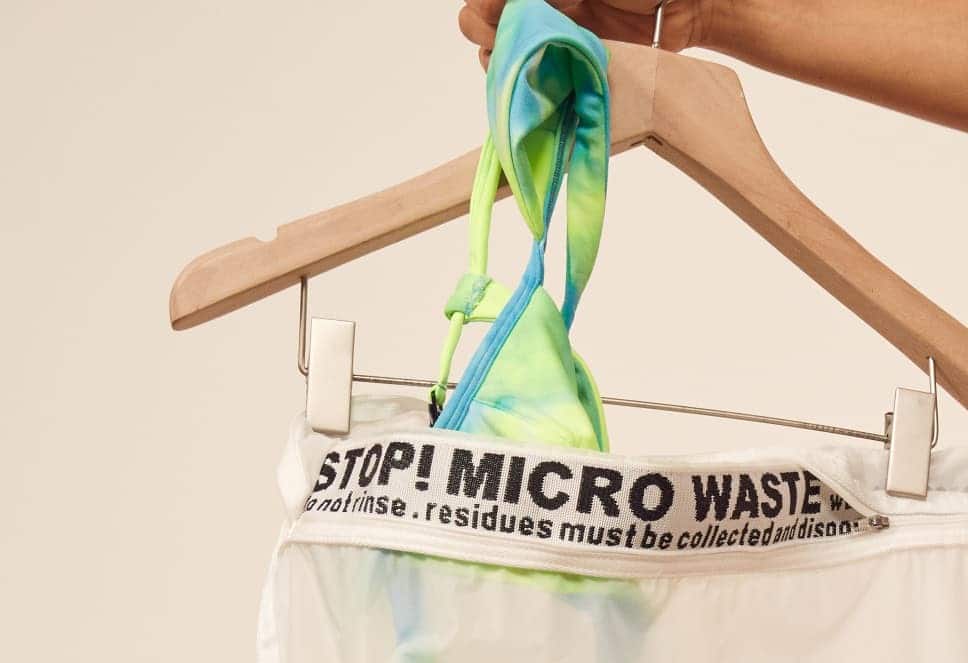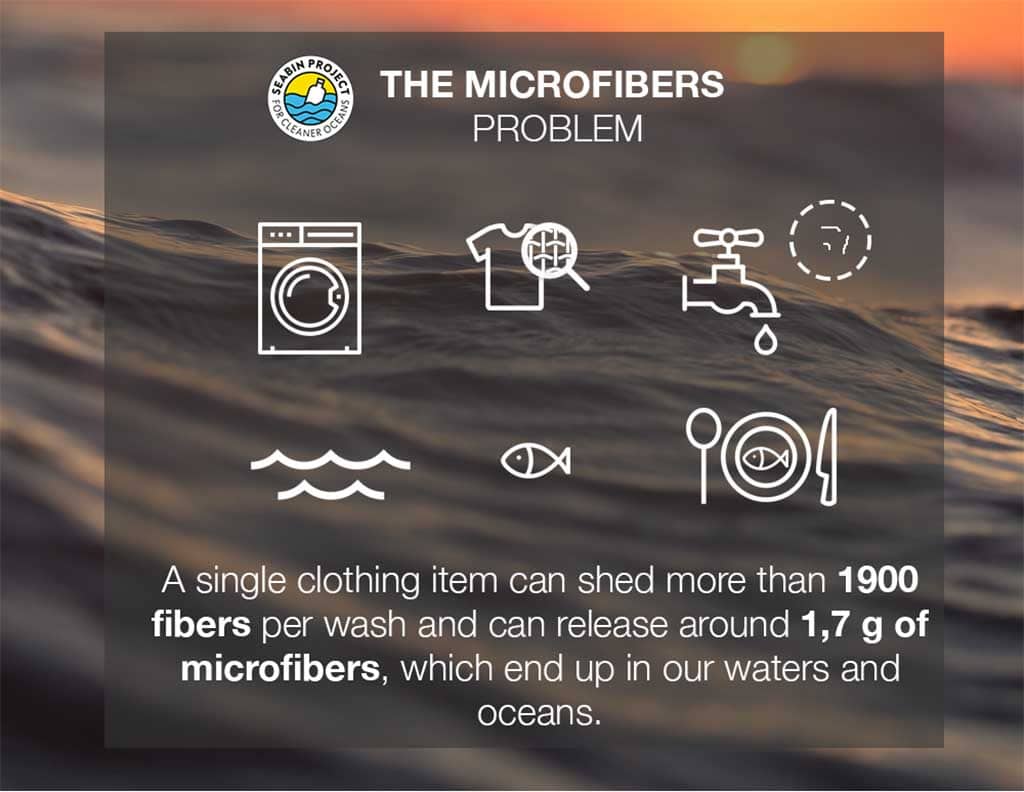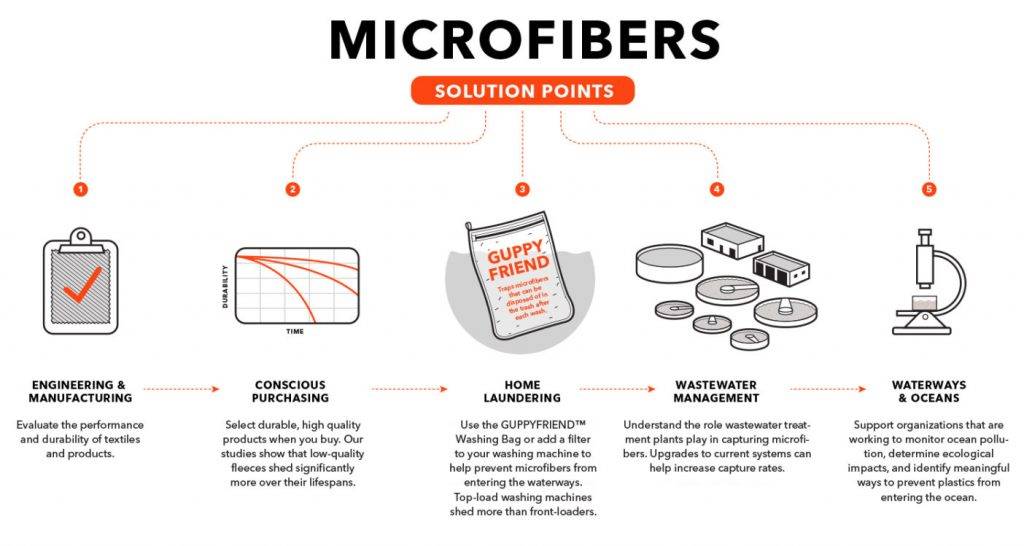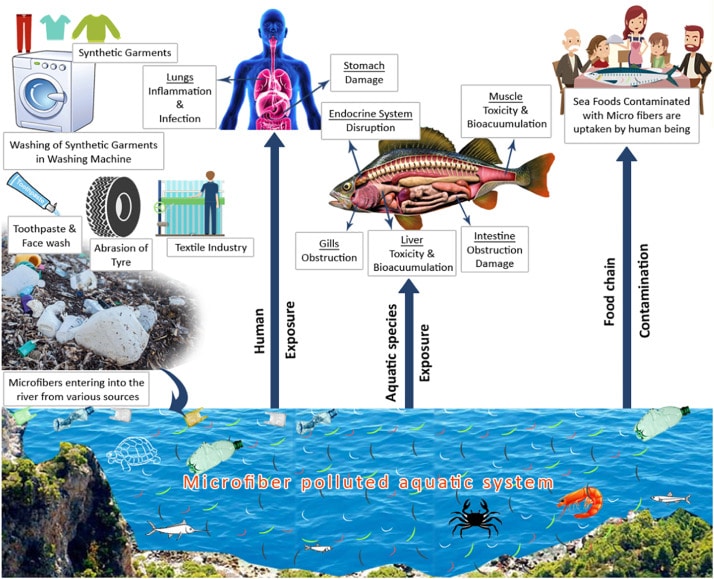Plastic is forever, and what ends up in the environment does not biodegrade, it just breaks into smaller pieces. Microplastics are tiny fragments of plastic broken down over time from larger plastics.
Scientists have known about microplastic pollution for decades, but the topic of microfiber pollution has only started to gain mainstream attention recently.
Microfibers come from our clothing, specifically synthetic clothing. When manufactured, washed, and worn, clothes made using synthetic materials lose tiny plastic fibres that end up in the environment.
These tiny plastic particles are thought to make up around 35% of the primary plastic currently polluting our oceans.

What are microfibers?
Microfibers are shed from synthetic fabrics, things like Polyester, Nylon, Spandex, Rayon or Acrylic and classified by less than 5mm in length.
There have been various scientific studies worldwide into the environmental effects of plastic in the ocean on marine life, with microfibers falling into the category of microplastics (small pieces of plastics that filter into the oceans and aquatic life).
The conclusions from these studies are pretty shocking, showing that a huge number of microfibers are in oceans and rivers.
One study by Mark Browne published in 2011 by Environmental Science & Technology, found that marine life and habitats in coastlines around the world were highly contaminated with microfibers. It’s suggested that this may be derived from sewage as a consequence of washing clothes.

Via the Seabin Project
These microfibers in the ocean are mistakenly consumed by marine life, which we then consume as part of the food chain…so yes we are in fact eating our own clothes.
The worst part is microfibers in water expand and attract different forms of harmful bacteria and pollutants.
This all makes one toxic meal for us to consume. The health effects of plastic contamination are disgusting – just look at the recent story of the whale in Norway that washed up sick with 30 plastic bags in its stomach. Further studies are here.
The solutions
The real issue with microfiber pollution is that there is still a lack of understanding and knowledge. This makes it incredibly difficult to tell brands and consumers about the issue and how to solve it.
The solution to microfibers is to stop them be released during the washing process. The next process is perhaps going to the appliance industry and waste operators and encouraging new filters and systems to be put into place.
Patagonia has been a key change-maker in the apparel industry, investing large funding grants into studies to find out more about microfibers.

Image: Patagonia
A project called ‘Microfiber pollution and the apparel industry by the University of California funded by Patagonia researched the variables that could affect the release of microfibers and how that could be used to change the textile industry and social behaviour.
This study revealed that the number of microfibers released from clothing change significantly between a number of factors; apparel age, fabric quality, washing machine type, fabric type and fabric construction.
Basically – the older and poorer quality clothing washed in a top loader machine will produce vastly more microfibers. Sad news for second hand and vintage shoppers (trust me, I’m devastated).
What we as consumers can do
The best consumer-available solutions to date have been the Cora Ball and the Guppy Friend, these are wash bags and filters that prevent microfibers from being washed away with the laundry water.
A study by the University of Toronto and the Ocean Conservancy found the microfiber filter Lint LUV-R captured an average of 87% of microfibers, keeping them out of rivers and lakes, while Cora Ball captured 26%.
“These results suggest that these two technologies added to washing machines could be an effective way to reduce microfiber emissions to the environment. While further investigations are needed to understand the relative contributions of microfibers from other textile products and their pathways to the environment, we know that textiles laundered in washing machines are one source of microfibers and that effective mitigation tools currently exist.”

Moving Forward
The fashion industry is a big problem for the environment and brands are starting to be put under the spotlight by consumers so they need to get their shit together. Greenpeace recently wrote a report that 60% of clothes are made with the synthetic material polyester.
This is why the solution is not to simply phase out synthetic materials as it won’t happen unless there is an incredible alternative.
Brands and industries (appliances/apparel) need to actually care for the impact they make on the world and make better quality clothing. They should always be investing in science and technology, looking for new ways to change the fashion industry for good with the evidence to back it up.
Consumers can also do their part aside from buying/using the inventions above. Consumers should buy good quality clothing that will produce less microfibers but also clothes that will last and be produced with less chemicals. A big solution is to wash less, hang your clothes out in the air or hand wash stains.
Also, demand more from your clothing brands, invest in good companies that are invested in the future – consumers have the power to make change!


